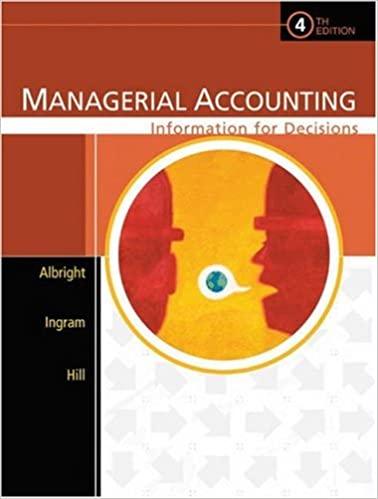Answered step by step
Verified Expert Solution
Question
1 Approved Answer
Complete this question by entering your answers in the tabs below. Organize the transaction data in accounts under an accounting equation for year 1. Note:




 Complete this question by entering your answers in the tabs below. Organize the transaction data in accounts under an accounting equation for year 1. Note: Enter any decreases to account balances with a minus sign. Leave cells blank if no input is needed. Round your answers to the nearest whole dollar. Organize the transaction data in accounts under an accounting equation for year 2. Note: Enter any decreases to account balances with a minus sign. Leave cells blank if no input is needed. Round your answers to the nearest whole dollar. Complete this question by entering your answers in the tabs below. Determine the following amounts for the Year 2 accounting period. Note: Round your answers to nearest whole dollar amount. Rosie Dry Cleaning was started on January 1, Year 1. It experienced the following events during its first two years of operation: Events Affecting Year 1 1. Provided $34,830 of cleaning services on account. 2. Collected $27,864 cash from accounts receivable. 3. Adjusted the accounting records to reflect the estimate that uncollectible accounts expense would be 1 percent of the cleaning revenue on account. Events Affecting Year 2 1. Wrote off a $261 account receivable that was determined to be uncollectible. 2. Provided $40,647 of cleaning services on account. 3. Collected $35,973 cash from accounts receivable. 4. Adjusted the accounting records to reflect the estimate that uncollectible accounts expense would be 1 percent of the cleaning revenue on account. Required a. Organize the transaction data in accounts under an accounting equation for each year. b. Determine the following amounts: 1. Net income for Year 1. 2. Net cash flow from operating activities for Year 1. 3. Balance of accounts receivable at the end of Year 1. 4. Net realizable value of accounts receivable at the end of Year 1. c. Determine the following amounts: 1. Net income for Year 2. 2. Net cash flow from operating activities for Year 2. 3. Balance of accounts receivable at the end of Year 2. 4. Net realizable value of accounts receivable at the end of Year 2. Complete this question by entering your answers in the tabs below. Determine the following amounts for the Year 1 accounting period. Note: Round your answers to nearest whole dollar amount
Complete this question by entering your answers in the tabs below. Organize the transaction data in accounts under an accounting equation for year 1. Note: Enter any decreases to account balances with a minus sign. Leave cells blank if no input is needed. Round your answers to the nearest whole dollar. Organize the transaction data in accounts under an accounting equation for year 2. Note: Enter any decreases to account balances with a minus sign. Leave cells blank if no input is needed. Round your answers to the nearest whole dollar. Complete this question by entering your answers in the tabs below. Determine the following amounts for the Year 2 accounting period. Note: Round your answers to nearest whole dollar amount. Rosie Dry Cleaning was started on January 1, Year 1. It experienced the following events during its first two years of operation: Events Affecting Year 1 1. Provided $34,830 of cleaning services on account. 2. Collected $27,864 cash from accounts receivable. 3. Adjusted the accounting records to reflect the estimate that uncollectible accounts expense would be 1 percent of the cleaning revenue on account. Events Affecting Year 2 1. Wrote off a $261 account receivable that was determined to be uncollectible. 2. Provided $40,647 of cleaning services on account. 3. Collected $35,973 cash from accounts receivable. 4. Adjusted the accounting records to reflect the estimate that uncollectible accounts expense would be 1 percent of the cleaning revenue on account. Required a. Organize the transaction data in accounts under an accounting equation for each year. b. Determine the following amounts: 1. Net income for Year 1. 2. Net cash flow from operating activities for Year 1. 3. Balance of accounts receivable at the end of Year 1. 4. Net realizable value of accounts receivable at the end of Year 1. c. Determine the following amounts: 1. Net income for Year 2. 2. Net cash flow from operating activities for Year 2. 3. Balance of accounts receivable at the end of Year 2. 4. Net realizable value of accounts receivable at the end of Year 2. Complete this question by entering your answers in the tabs below. Determine the following amounts for the Year 1 accounting period. Note: Round your answers to nearest whole dollar amount Step by Step Solution
There are 3 Steps involved in it
Step: 1

Get Instant Access to Expert-Tailored Solutions
See step-by-step solutions with expert insights and AI powered tools for academic success
Step: 2

Step: 3

Ace Your Homework with AI
Get the answers you need in no time with our AI-driven, step-by-step assistance
Get Started


